End of the era of Elizabeth II of the United Kingdom
Shortly after Mikhail Gorbachev, the last president of the former Soviet Union, Queen Elizabeth II of the United Kingdom also left us at the age of 96 and after 70 years of reign.
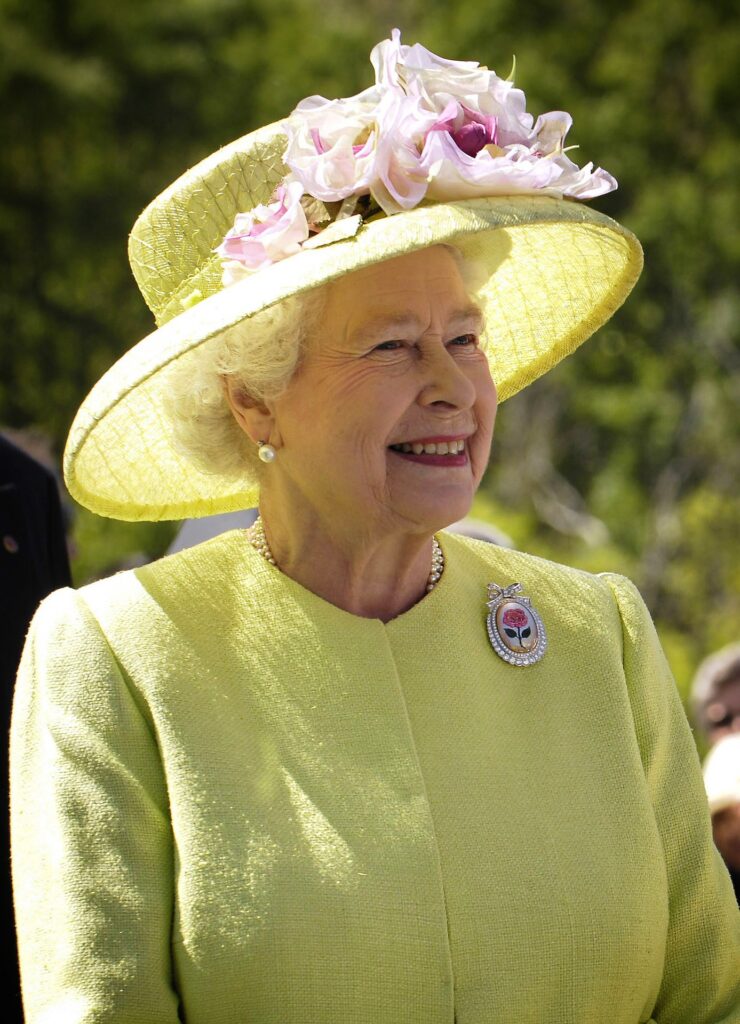
Queen Elizabeth II was British queen for 70 years and died at the age of 96 on September 8, 2022 at her Scottish country residence, Balmoral Castle. Only two kings have reigned longer: Louis XIV of France (over 72 years between 1643 and 1715) and Bhumibol Adulyadej of Thailand (70 years and four months, until his death in October 2016).
She ascended the British throne on Feb. 6, 1952 at age 25 after the sudden death of her father, and became head of state of Great Britain and Northern Ireland and more than a dozen other states, including Canada, New Zealand, and Australia but also head of state of 15 of the 54 Commonwealth nations, known as the Commonwealth Kingdoms: Antigua and Barbuda, Australia, Bahamas, Belize, Canada, Grenada, Jamaica, New Zealand, Papua New Guinea, St. Kitts and Nevis, St. Lucia, St. Vincent and the Grenadines, Solomon Islands and Tuvalu. The number of its kingdoms varied over time as some territories gained independence and some kingdoms became republics.
Elizabeth reigned as constitutional monarch during major political changes, such as the Troubles in Northern Ireland, devolution to the United Kingdom, the decolonization of Africa, globalization, the Cold War, and the United Kingdom’s membership in the European Communities and its withdrawal from the European Union.
Mikhail Gorbachev and a part of history goes away
Biography in Brief
Elizabeth II, born Elizabeth Alexandra Mary on April 21, 1926 in Mayfair, London, as the first daughter of the Duke and Duchess of York was queen of the United Kingdom and the other Commonwealth kingdoms from February 6, 1952 until her death on September 8, 2022. During her lifetime she was reigning queen of 32 different sovereign states and, at the time of her death, was monarch of 15. Her reign, which lasted 70 years and 214 days, is the longest of any British monarch and the longest recorded by any female head of state in history.
She was not destined to be queen
The eldest daughter of Prince Albert, Duke of York, who would later become king as George VI, and his wife Elizabeth Bowes-Lyon, Duchess of York later queen consort, she became heir to the throne in 1936 when her uncle Edward VIII already impatient with court etiquettes and duties, abdicated to marry the American Wallis Simpson, a non-aristocrat and multi-divorced, thus not at all in line with crown and religious dictates (the king or queen is also supreme governor of the Church of England).
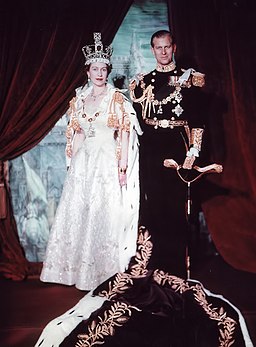
Marriage and descent
Elizabeth II first met her future husband, Prince Philip of Greece and Denmark, in 1934 as her third cousin and began an exchange of letters with him that lasted several years until 1947, the year of her 21st birthday when the engagement was announced and then the marriage celebrated on November 20, 1947 at Westminster Abbey.
Philip to marry Elizabeth had to renounce his previous titles of nobility and convert from orthodox Christianity to Anglicanism. Shortly before the marriage he was named Duke of Edinburgh and given the title “His Royal Highness”
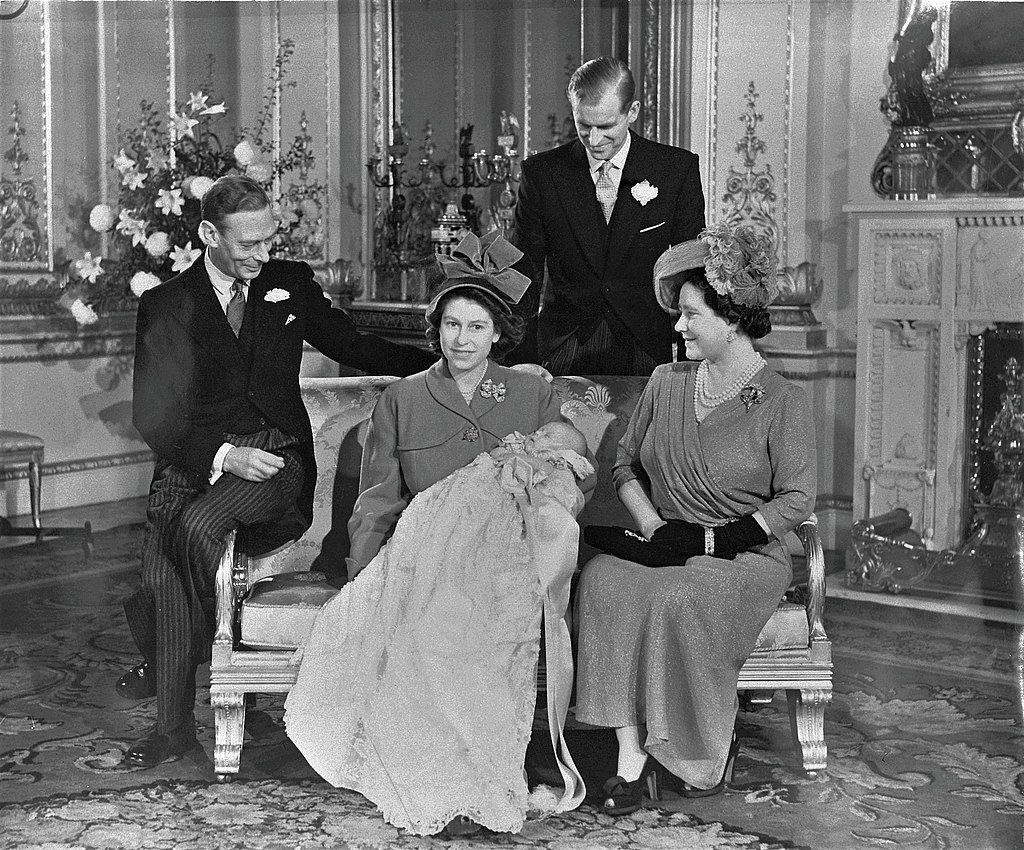
On November 14, 1948 their first son Charles, Prince of Wales was born while in 1950 their second son Anne, Princess Royal, was born, in 1960 their third son Andrew, Duke of York, and finally in 1964 Edward Earl of Wessex.
At the time of his passing he left eight grandchildren and 12 great-grandchildren.
Commonwealth
The Commonwealth is a voluntary association of 56 nations, most of which were ruled by Britain at some time in history.
The word Commonwealth is derived from the union of common and wealth, meaning common welfare.
The roots of the Commonwealth go back to the 1926 Balfour Declaration, which recognized the “Dominions” (Australia, New Zealand, Canada, Newfoundland, South Africa and the Irish Free State) as “autonomous communities within the British Empire,” but it was only the 1949 London Declaration, issued in the wake of Indian independence, that paved the way for the modern Commonwealth, which can also be called the “successor” to the British Empire.
Today any country can join the modern Commonwealth, and the last two countries to join were Gabon and Togo in 2022.
Queen Elizabeth II’s life through the years
Before her accession to the throne
In 1939, the year World War II broke out, Elizabeth was 13 years old. The royal family was supposed to be evacuated abroad but she refused to leave the country, dividing her time between her Balmoral residence in Scotland and Windsor Castle just outside London.
In 1940 at just 14 she made her first radio broadcast in which she reassured the children of Britain who had been evacuated from their homes and families by telling them “that everything will be all right in the end, because God will take care of us and give us victory and peace.”
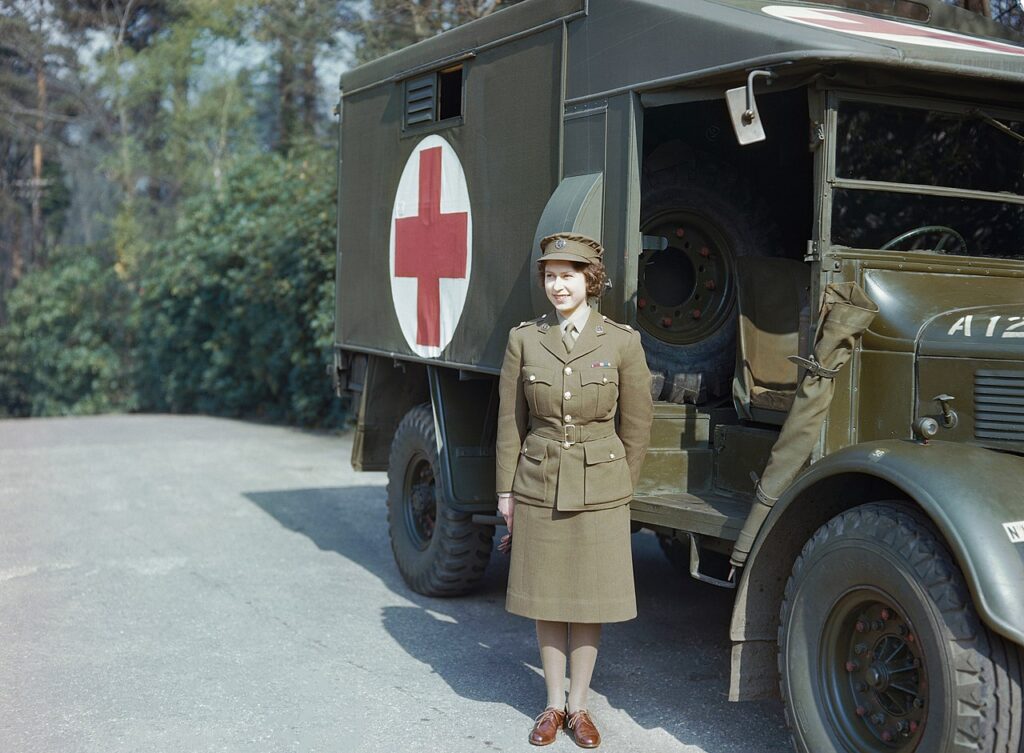
In 1945 Elizabeth convinced her father to allow her to join the Auxiliary Territorial Service (ATS) where she was trained as a driver and mechanic and was promoted to Junior Commander five months later. With the end of the war, she and her sister Margaret were allowed to mingle anonymously among the citizens on Victory Day in Europe and celebrate with the people, something that remained forever in the sovereign’s heart and memories.
1950s, 1960s and 1970s
In 1952, with the death of her father George VI, she became Queen of the United Kingdom as well as head of state of several other Commonwealth states.
In 1957 she first appeared on television from her residence for the Christmas message.
Between the 1960s and 1970s she witnessed the decolonization process in Africa and the Caribbean in which more than 20 states gained independence from the United Kingdom.
In 1965 the Queen visited West Berlin at the height of the Cold War: it was the first visit to Germany by a British monarch in more than half a century.
In 1969 Neil Armstrong and Buzz Aldrin became the first men to walk on the moon. Seventy-two world leaders entrusted the two astronauts with a message to take to the Planet including one from Queen Elizabeth II that read, “On behalf of the British people, I pay tribute to the skills and courage that brought man to the Moon. May this feat increase the knowledge and welfare of mankind.” After this mission Neil Armstrong and Buzz Aldrin were received by the Queen and her family at Buckingham Palace.
In 1972 Elizabeth II made her first visit to Thailand with her husband Prince Philip and daughter Princess Anne.
In 1973 Britain joined the European Economic Community EEC.
In 1975 the Queen, together with her husband, Prince Philip visited Japan, becoming the first British monarch to visit the country.
1980s
These years were quite eventful for Queen Elizabeth II, who suffered an assassination attempt in 1981 during the “Trooping the Colour” event when six gunshots were fired at her from close range as she was riding through The Mall. It was later discovered that these were blanks fired by a 17-year-old youth later sentenced to five years in prison. The same year, he suffered a second attack in Dunedin, New Zealand: this time the shots were fired with a. 22 Long Rifle from the fifth floor of a building that overlooked the street traveled by the Queen.
In 1980 Queen Elizabeth II paid an official visit to Switzerland with her husband, Prince Philip: it was the only official visit by a member of the British royal family to Switzerland.
In 1981 at St. Paul’s Cathedral in London, the marriage of his first son and heir to the throne Prince Charles to Lady Diana Spencer was celebrated. The wedding seen as a “fabulous wedding” was the first real media wedding broadcast on worldwide TV and seen by more than 700 million people.
In 1982, there was Falklands War, in which the Queen’s third son, Prince Andrew, also participated.
Also in 1982, Queen Elizabeth II found a stranger sitting on her bedside one morning when she woke up. The intruder later identified as Michael Fagan, had managed to evade the security device and enter Buckingham Palace undisturbed, arriving at the sovereign’s private apartments. This event turns out to be the most serious breach carried out in the palace and one of the most serious flaws in the security services.

During these years a bond of friendship developed between the British sovereign and U.S. President Ronald Reagan, who was hosted in 1982 at Windsor Castle while the following year, during one of his visits to the United States, the queen was a guest of the Reagans at the estate the Rancho del Cielo in California owned by the U.S. president. However, this did not avoid some tension because of the U.S. invasion of Grenada, a Commonwealth state accused by the U.S. of having ties to the USSR.
In 1989 she welcomed to Windsor Castle with full honors the then USSR President Mikhail Gorbachev who had come to the UK for a state visit.
By the late 1980s, Elizabeth II became the increasingly frequent target of British satire in which her figure was ridiculed.
1990s
These years were particularly hard for the Queen, who had to deal with several scandals and family vicissitudes such as the separation of her third son Prince Andrew from his wife Sarah Ferguson and the divorce of her second daughter Princess Anne from her husband Captain Mark Philips.
In December 1992, his first son and heir to the throne Prince Charles and his wife, Diana Spencer, formally separated: at the time, the press gave much space to it by publicizing betrayals and crises within the royal family. Queen Elizabeth II, after consulting with Prime Minister John Major, the Archbishop of Canterbury, George Carey, and her private secretary Robert Fellowes, agreed to Charles and Diana’s divorce in 1995.
Also in 1992, the British prime minister, John Major, announced a reform on royal finances that would result in the queen paying taxes starting in 1993, and a fire severely damaged part of Windsor Castle.
In August 1997 her former daughter-in-law Princess Diana died in a car accident in Paris along with her partner Dodi Al-Fayed, and car driver Henri Paul. The royal family did not show themselves to the public for five consecutive days and did not hoist the flag at half-mast as a sign of mourning at Buckingham Palace sparking public outcry that actually forced Elizabeth II to broadcast a televised message addressed to the nation in which she praised Diana. As the Princess was already divorced from Charles a private funeral was initially arranged but the reaction of the British people who loved the Princess dearly prompted the royal house to arrange public funeral services attended by thousands of people crowded around the barriers along the streets of London. The full royal family waited, dressed in mourning, for the coffin to pass in front of Buckingham Palace, and Elizabeth II bowed her head in respect. The funeral was held in Westminster Abbey in the presence of the entire royal family, broadcast live on televisions around the world and watched by more than two billion people, making it one of the most watched television events in history.
In the 1990s, the monarchy became increasingly subject to attacks and criticism from the press and the public.
New millennium
Queen Elizabeth II celebrated her Golden Jubilee, or the 50th anniversary of her accession to the throne in 2002, and in the same year she made an extensive trip to Commonwealth countries. The same year Elizabeth II had to deal with two serious family bereavements, namely the deaths of her sister Princess Margaret and Queen Mother Elizabeth Bowes-Lyon which occurred within a short time of each other
In 2005 the heir to the throne Prince Charles married his historical, first mistress, then fiancée Camilla Rosemary Parker-Bowles (née Shand) who had gravitated to the life of Elizabeth’s eldest son since the 1970s even before his previous marriage to Lady Diana Spencer. This marriage was rather difficult to arrange as a number of bureaucratic and dynastic issues had to be resolved as it was the first civil marriage for an heir to the throne (he was already a widower but she was divorced) and consent had to be obtained not only from Elizabeth II (it seems she granted it with some reluctance) who was also head of the Church of England, but also from Parliament and the Church of England itself of which Charles was to become Supreme Governor upon his accession to the throne. She and Prince Philip did not attend the civil ceremony, but took part in a religious blessing and held a reception in their honor at Windsor Castle.
In 2007 Elizabeth II became the first British monarch to celebrate her 60th wedding anniversary (diamond wedding) and became the oldest British monarch of all time.
In 2010 Elizabeth II, as required by the Royal Marriages Act 1772, gave her formal consent to the marriage, between her grandson Prince William Arthur Philip Louis, eldest son of Prince Charles and his late ex-wife Diana, Princess of Wales, second in succession to the British throne, to “commoner” Catherine Elizabeth Middleton better known simply as Kate Middleton. The girl not having noble origins turns out to be the first to marry a future king, which increased the consent of the English population and made the monarchy more modern and close to the people. The wedding was then celebrated on April 29, 2011, and was watched by an estimated 2 billion people worldwide.
In 2011, she became the first British sovereign to make a state visit to the Republic of Ireland following an invitation from then-President Mary McAleese.
In 2012, she celebrated the Diamond Jubilee, or the 60th anniversary of her accession to the throne, which was celebrated throughout the United Kingdom and the entire Commonwealth and the 65th anniversary of her marriage to her husband Prince Philip.
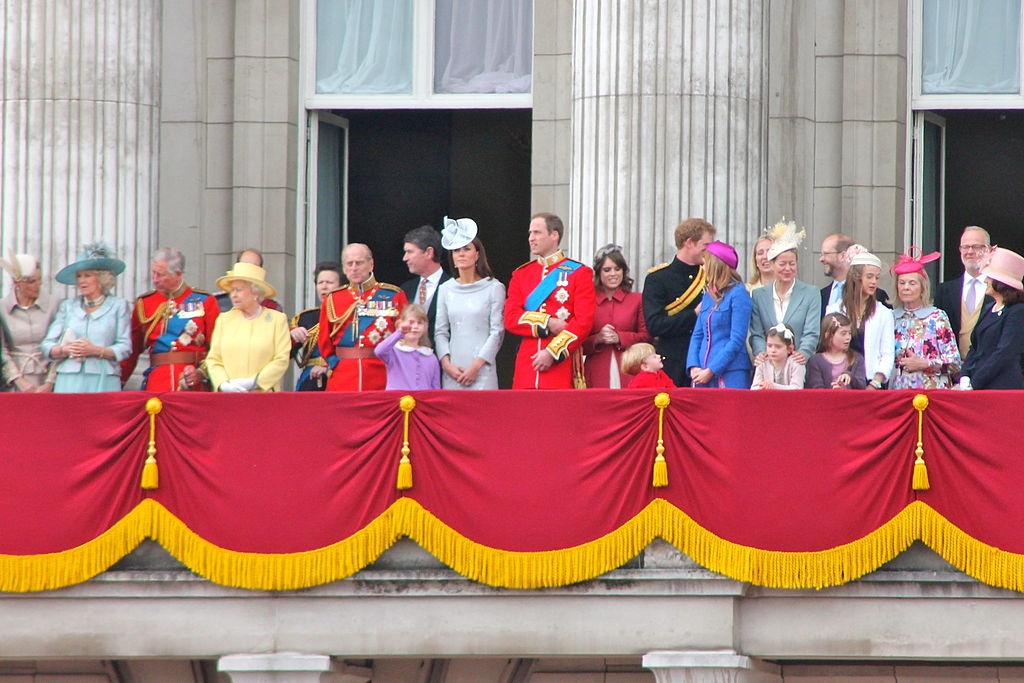
In 2012 at the 2012 London Olympics, the monarch lent herself for a short film for the opening ceremony at Wembley Stadium. In the same, the famous James Bond played by Daniel Craig is seen entering Buckingham Palace to pick up the monarch from her personal study and take the helicopter to the stadium where they would parachute in (video made with stunt doubles) and then appear in the stands. With the opening of the XXX Olympiad in London, he became the first head of state to open two editions of the Games in two different nations (the first were the Games of the XXI Olympiad in Montréal in 1976).
In 2015, Elizabeth II’s reign became the longest ever in British history and the longest-serving monarch in the world.
In 2017, Elizabeth II became the first British monarch to celebrate a Sapphire Jubilee, or the 65th anniversary of her accession to the throne. The same year she celebrated her 70th wedding anniversary with Prince Philip.
In 2019, she deprived her third son Prince Andrew of the title of “Royal Highness,” patronages, his honorary roles in the military, and removed him from all public and institutional engagements following a media storm due to scandals and controversial business dealings with his friend Jeffrey Epstein, who was convicted of sex crimes. In agreement with the rest of the family also arranged for his son to defend himself in the lawsuit in which he is involved as an ordinary citizen.
In 2020, Queen Elizabeth II and Prince Philip moved to Windsor Castle to ward off possible contagion following the start of the COVID-19 pandemic around the world. After seven months in which she held only virtual hearings because of the pandemic, the sovereign returned to the public on Oct. 15, 2020, to visit the Defense Science and Technology Laboratory, Wiltshire.
In 2021, after 73 years of marriage, she was widowed by Prince Philip who passed away at age 99. Because of the Covid-19 restrictions in place in the UK at the time, the queen was seated alone at Philip’s funeral, a gesture that drew sympathy and emotion from people around the world.
In 2021, the queen welcomed U.S. President Joe Biden and his consort to Windsor Castle for an official visit. That same year, the Queen began using a walking stick at public events but nonetheless declined the “The Oldie of the Year Award” given by the British monthly magazine The Oldie, stating that “one is old when one feels old.”
In 2022, the Queen was very concerned about the Russian-Ukrainian Diplomatic Crisis and received constant updates on the situation from then Prime Minister Boris Johnson.
In 2022, the Palace leaked, without giving official notice, the Sovereign’s decision not to return to using Buckingham Palace as her official residence and to move permanently to Windsor Castle.
On May 17, 2022, she attended the opening of the new London Underground line, the “Elizabeth Line,” accompanied by her son Edward, Earl of Wessex.
On June 2, 2022, official platinum jubilee celebrations began with the Trooping the Colour parade, which featured all members of the royal family performing official duties on behalf of the queen; the monarch was present at the salute to the crowd from the balcony of Buckingham Palace at the end of the parade. To celebrate this event, Elizabeth II lent herself to filming a short film in which she is seen having tea at Buckingham Palace with Paddington, the famous teddy bear, an English literary character for children who pays his respects and wishes her well on the holiday with his traditional irony and comedy. The film also shows the sovereign pulling out a sandwich from her purse and the teddy bear closes it by telling her “Thank You Ma’am, for everything.”
British ministers and the ” Big of the Earth”
Elizabeth II’s role involved her being a head of state above party: she ruled but did not in fact govern. During her long reign she met many heads of state as well as history-making figures.
He saw 15 British prime ministers serve under him, starting with Winston Churchill (1952-1955), Anthony Eden (1955-1957), Harold Macmillan (1957-1963), Alec Douglas-Home (1963-1965), Harold Wilson (1964-1970 and 1974-1976), Edward Heath (1970-1974), James Callaghan (1976-1979), Margaret Thatcher (1979-1990), John Major (1990-1997),Tony Blair (1997-2007), Gordon Brown (2007-2010), David Cameron (2010-2016), Theresa May (2016-2019), Boris Johnson (2019-2022), Liz Truss (2022-in office)
He has met 13 of the last 14 U.S. presidents, from Harry S. Truman to Joe Biden: the only U.S. president he has not met was Lyndon Johnson.
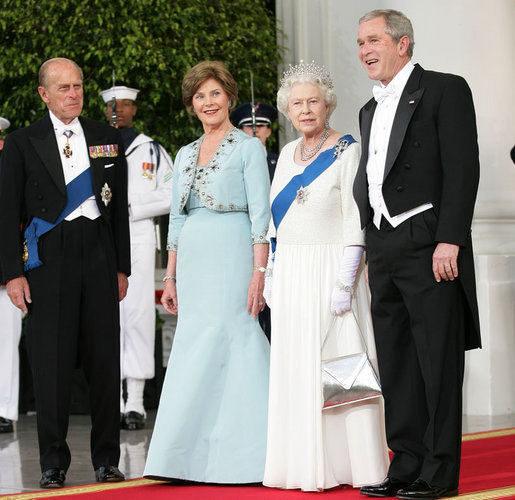
She met 4 popes during her reign starting with Pope John XXIII, John Paul II, Benedict XVI, and Francis. In 1951 she met Pope Pius XII while she was still Princess of Wales.
Elizabeth first visited Italy in 1951 when she was still a princess with her husband, Prince Philip and met then-President of the italian Republic Luigi Einaudi and Prime Minister Alcide De Gasperi. She returned in 1961 meeting then President Gronchi, then in 1980 Sandro Pertini, in 2000 Carlo Azeglio Ciampi, in 2006 and 2014 Giorgio Napolitano while in 1990 she received Francesco Cossiga and in 2015 she received Sergio Mattarella at Buckimgham Palace.
In 1956, Queen Elizabeth II received Soviet leader Nikita Khrushchev, then in 1989 she received in audience Mikhail Gorbachev protagonist of the dissolution of the Soviet Union and the birth of the Russian Federation who passed away in Moscow shortly before the Queen on August 30, 2022. In 1994 she was the first British monarch in history to visit Russia, hosted by then-President Boris Yeltsin while in 2003 she met Russian President Vladimir Putin during a state visit to Britain.
In 1971 he received Japanese Emperor Hirohito, the first reigning emperor to travel outside Japan.
In 1972 Queen Elizabeth II visited the former Yugoslavia, becoming the first British monarch to visit a communist country. During her trip she was received at Belgrade airport by then-President Josip Broz Tito, and welcomed by a crowd of thousands.
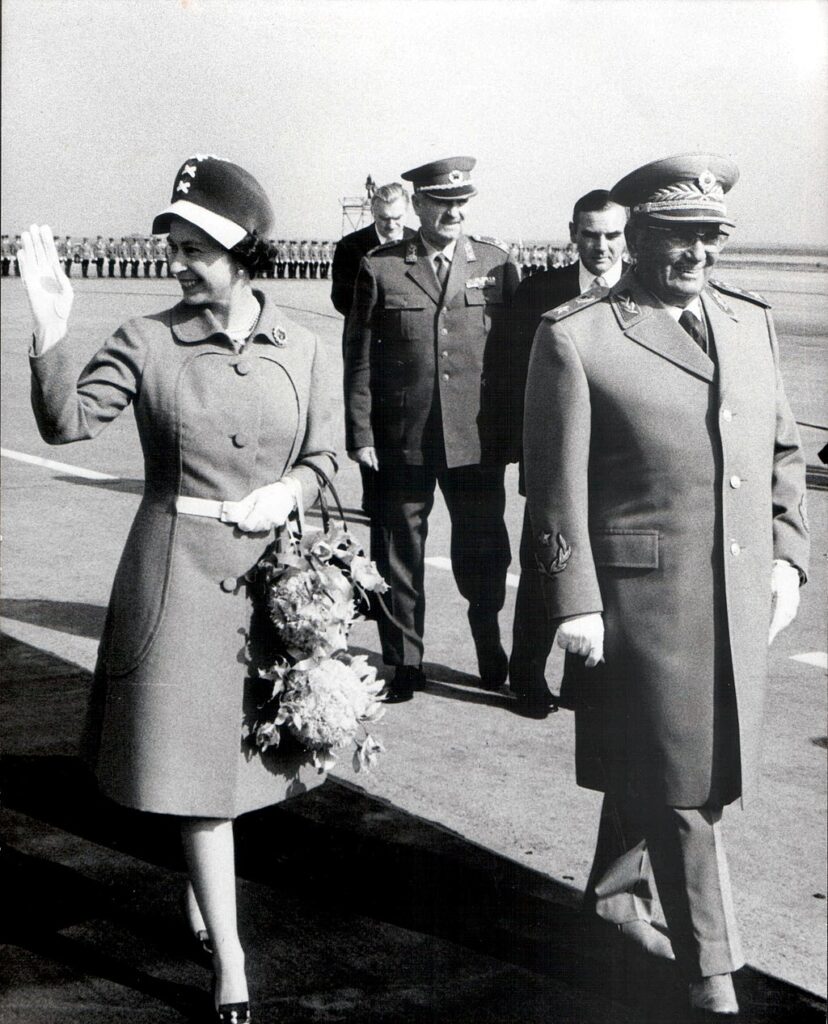
In 1978 Queen Elizabeth II received, it is said with some reluctance Romanian dictator Nicolae Ceausescu and his wife invited to Britain by then Foreign Secretary David Owen.
In 1980 Elizabeth II met then President of the Helvetic Confederation Georges-André Chevallaz during her only state visit to the Alpine country. Later in London she met with other presidents of the Confederation: Flavio Cotti, Samuel Schmid, Eveline Widmer-Schlumpf and Ignazio Cassis.
In 1983, Queen Elizabeth II met Mother Teresa of Calcutta (1910 – 1997) and conferred on her the honor of Honorary Member of the Order of Merit of the United Kingdom.
In 1986, Queen Elizabeth II met with Chinese Communist leader Deng Xiaoping during a six-day state visit to China, becoming the first British monarch to visit the country. It was one of the most important trips she had ever taken, at a crucial moment in diplomacy during negotiations between the United Kingdom and the People’s Republic of China over the return of Hong Kong. The 99-year lease of Hong Kong had been agreed in 1898, after the signing of the Peking Convention, and in December 1984, Prime Ministers Zhao Ziyang and Margaret Thatcher had signed the Sino-British Joint Declaration, under which the Chinese would resume sovereignty over the territory as of July 1, 1997. This visit paved the way for other meetings between the leaders of the two countries that strengthened their partnership in the following years. In 1998 she welcomed Chinese Premier Zhu Rongji to Windsor Castle while in 1999 she welcomed Chinese President Jiang Zemin to Buckingham Palace (he was the first Chinese president to pay a state visit to Britain) then in 2005 at her invitation she received President Hu Jintao. In 2015, Queen Elizabeth II welcomed Chinese President Xi Jinping to Buckingham Palace. This visitwas interpreted as the opening of a “golden era” in China-Britain relations, characterized by lasting, inclusive and mutually beneficial cooperation.
In 1995 Queen Elizabeth II, made an institutional trip to South Africa of great symbolic significance after the decades of Apartheid in which she met President Nelson Mandela, the first non-white South African president to hold that office.
In 2012, Queen Elizabeth II exchanged a historic handshake in Belfast with Martin McGuinness, former commander of the Irish Republican Army and number two in the Sinn Fein party, which does not recognize her sovereignty over Northern Ireland-this gesture would have been unimaginable only a few years earlier. The IRA also had assassinated in 1979 Lord Louis Mountbatten, her distant relative and uncle to her husband Prince Philip. Their handshake took place 14 years after the Good Friday peace accords that ended three decades of conflict.
Artists she met
The monarch has also met some of the greatest artists of the 20th and 21st centuries such as opera singer Maria Callas, actors Charlie Chaplin, Elizabeth Taylor, Laurence Olivier, Vivien Leigh, Marilyn Monroe, and Brigitte Bardot, dancer Rudolf Nureyev, singers Frank Sinatra, Elton John, Madonna, Michael Jackson, Lady Gaga, Paul McCartney, Eric Clapton the Spice Girls, Bono of U2, Agatha Christie British mystery writer,
Among the many people on whom the Queen bestowed honors include Steven Spielberg, who was named a Knight of the British Empire Angelina Jolie on whom she bestowed the title of Honorary Dame of the Order of St. Michael and St. George, Angela Lansbury, best known as Jessica Fletcher in ” Murder She Wrote” named a Commander of the Order of the British Empire, David Beckham footballer named an Officer of the Order of the British Empire.
Funeral
Queen Elizabeth II’s funeral was held on September 19, 2022 at Westminster Abbey in London and was attended, in addition to the royal family, by almost all the world’s heads of state and crowned heads, and about 1 million people reached the city to attend the same.
Elizabeth II’s funeral was also the first for a British monarch, to be televised and was watched by more than 26 million people.
Her long reign spanning two centuries, during which she achieved several firsts, made her one of the world’s most popular figures.
The Queen was buried next to her husband, Prince Philip, and her parents King George VI and Elizabeth Bowes-Lyon in the King George VI Memorial Chapel in the grounds of Windsor Castle after 10 days of national mourning, thus finally ending the “Elizabethan” era and thus beginning the reign of Charles III.
Succession
Elizabeth II is succeeded by her 73-year-old son Charles with the name “Charles III,” while Prince William, now 40-year-old grandson of the Queen becomes the heir to the throne and 9-year-old Prince George will now be second in line.





